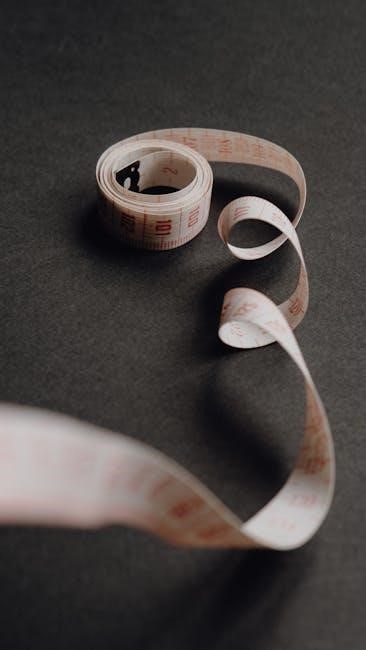Sewing guide tools are essential for efficiency and accuracy in sewing projects․ They help measure, cut, and mark fabrics precisely, ensuring professional results․ Whether you’re a beginner or an experienced sewer, these tools are crucial for transforming fabric into finished products seamlessly․ Having the right guide tools enhances creativity and productivity, making sewing more enjoyable and successful․
1․1 What is a Sewing Guide Tool?
A sewing guide tool is a device designed to assist sewers in achieving precise alignment and spacing during various sewing tasks․ It helps in maintaining consistent stitching, hemming, or quilting․ These tools often feature measurements or adjustable guides, making them versatile for different projects․ They simplify the sewing process, ensuring accuracy and saving time․ A sewing guide tool is an invaluable aid for both beginners and experienced sewers, enhancing overall sewing efficiency and quality․
1․2 Importance of Sewing Guide Tools in Sewing
Sewing guide tools are indispensable as they ensure precision, consistency, and efficiency in sewing projects․ They help maintain accurate measurements, alignment, and spacing, reducing errors and saving time․ These tools are especially vital for intricate designs, quilting, and garment construction, where even minor deviations can affect the final result․ By using sewing guide tools, sewers can achieve professional-quality outcomes, making them an essential component of any sewing kit or workspace․
Measuring Tools in Sewing
Measuring tools like tape measures and sewing gauges are crucial for accurate fabric measurements․ They ensure precise cuts and alignments, essential for achieving professional sewing results consistently․
2․1 Sewing Tape Measures
A sewing tape measure is a flexible ruler used to take body measurements and measure fabrics accurately․ It is a must-have tool for ensuring proper fit and proportions in garments․ Available in various lengths, tape measures often feature both inches and centimeters․ Durable materials like fiberglass or plastic ensure longevity․ Regularly used for pattern adjustments, a good tape measure is essential for achieving professional sewing results and avoiding sizing errors․
2․2 Sewing Gauges
A sewing gauge is a small, versatile tool used to measure precise distances and widths, ensuring consistent seam allowances and hems․ Typically made of plastic or metal, it features markings for common measurements․ Sewing gauges are ideal for marking buttonholes, hem depths, and fabric folds․ They also help in achieving uniform spacing for stitches or embellishments․ This handy tool is indispensable for maintaining accuracy and precision in various sewing tasks and projects․

Cutting Tools for Sewing
Cutting tools are vital for accurately trimming and shaping fabric․ Essential tools include fabric shears, rotary cutters, and seam rippers, ensuring precise cuts and clean finishes․
3․1 Fabric Shears
Fabric shears are indispensable for cutting fabric accurately and cleanly․ Dedicated fabric scissors are designed specifically for sewing, with sharp, heavy-duty blades to handle various fabric types․ Using high-quality shears ensures precise cuts, preventing fraying and uneven edges․ It’s important to use them solely for fabric to maintain sharpness and avoid dulling․ Regularly cleaning and storing them properly extends their lifespan, making them a long-lasting essential tool in your sewing kit․
3․2 Rotary Cutters and Blades
Rotary cutters are versatile tools for precise fabric cutting, especially for quilting and large projects․ They feature circular blades that glide smoothly, making straight or curved cuts․ Used with a cutting mat, they protect surfaces and ensure safety․ Sharp blades are essential for clean cuts, while dull blades can fray fabric․ Regular blade replacement and proper storage maintain their effectiveness․ They are ideal for cutting multiple fabric layers with accuracy and ease․
3․3 Seam Rippers
Seam rippers are indispensable tools for carefully removing stitches without damaging fabric․ They feature a sharp blade and a protective cover for safety․ Ideal for correcting mistakes, they allow precise removal of unwanted stitches․ Regular use prolongs blade sharpness, ensuring clean cuts․ A must-have for every sewer, seam rippers are versatile and essential for both beginners and experienced crafters, making them a key component in any sewing toolkit․
Marking Tools in Sewing
Marking tools are vital for transferring patterns and designs onto fabric accurately․ They ensure precise cuts and stitching, making the sewing process efficient and professional․ Essential tools include tailor’s chalk and tracing wheels, which help create clear, temporary marks that guide sewers throughout their projects․
4․1 Tailor’s Chalk
Tailor’s chalk is a fundamental marking tool used to transfer patterns and designs onto fabric․ Available in various colors, it creates temporary, easily removable marks․ Perfect for outlining seams, pockets, and darts, tailor’s chalk ensures accuracy․ It’s a must-have for both beginners and professionals, allowing precise fabric preparation and alignment․ Its ease of use and effectiveness make it an indispensable asset in any sewing kit․
4․2 Tracing Wheels
Tracing wheels are versatile marking tools used to create straight lines on fabric․ They feature interchangeable wheels with serrated or smooth edges, ensuring precise marks without slipping․ Ideal for thick or delicate fabrics, tracing wheels are a practical alternative to chalk, offering clear, accurate guidelines․ Their ease of use and adaptability make them a valuable addition to any sewer’s toolkit, enhancing efficiency and precision in various projects․

Hand Sewing Tools
Hand sewing tools are indispensable for precision and control in stitching․ They include needles, pins, pincushions, and thimbles, each designed to simplify hand-sewing tasks and ensure neat results․
5․1 Hand Sewing Needles
Hand sewing needles are a fundamental tool for any sewer․ They come in various types, such as sharp, blunt, and beading needles, each suited for specific fabrics and techniques․ Sharp needles are ideal for general sewing, while blunt needles are better for thick fabrics․ Using the right needle ensures smooth stitching and prevents fabric damage, making hand sewing efficient and precise․ Proper needle selection is key to achieving professional results in your projects․
5․2 Pins and Pincushions
Pins and pincushions are indispensable for holding fabric in place while sewing․ Glass head pins are ideal as they can be ironed over, making them convenient for precise alignment․ Pincushions provide easy access to pins, keeping them organized and within reach․ Using high-quality pins ensures fabrics stay secure without damage, while a pincushion helps maintain a tidy workspace, enhancing efficiency and accuracy in your sewing projects․
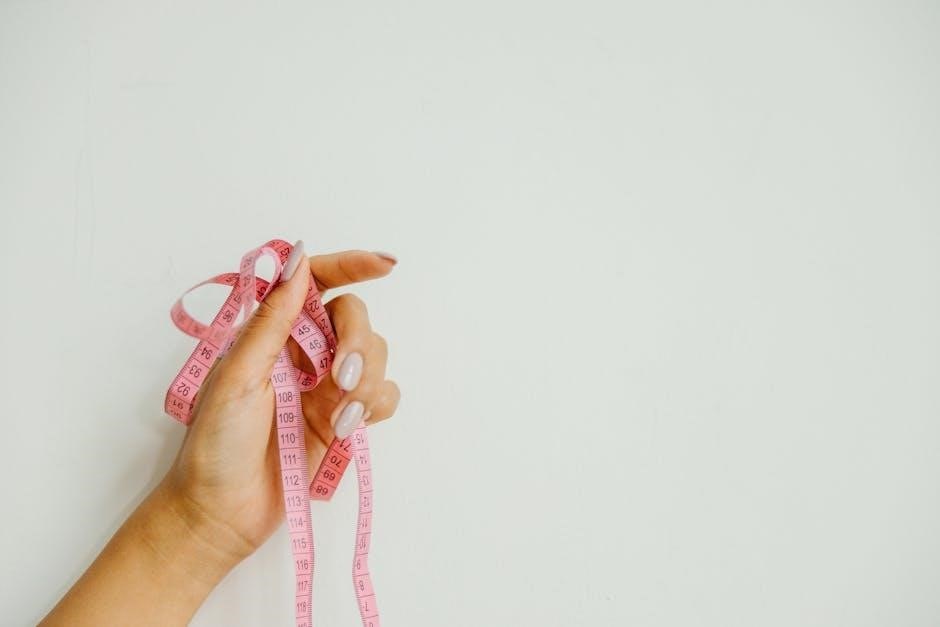
Sewing Machine Accessories
Sewing machine accessories like presser feet, bobbin threaders, and specialized attachments enhance functionality․ They improve stitching accuracy, handle diverse fabrics, and expand creative possibilities for sewers of all levels․
6․1 Presser Feet
Presser feet are vital sewing machine accessories that cater to specific tasks․ From standard feet for general sewing to specialized ones like walking feet or zipper feet, they ensure fabric stability and control․ These feet are designed to handle various fabrics and techniques, enhancing stitching accuracy and preventing slippage․ They are indispensable for achieving professional results in quilting, garment sewing, and home decor projects, making them a must-have for every sewer․
6․2 Bobbins and Threaders
Bobbins and threaders are essential for smooth sewing machine operation․ Bobbins hold the bottom thread, ensuring proper tension and stitch formation․ Threaders simplify the process of guiding thread through the machine’s tension discs and take-up lever․ Using the correct size and type of bobbin for your machine is crucial for consistent stitching․ These tools prevent thread tangles and ensure efficient sewing, making them indispensable for both beginners and experienced sewers․
The Sewing Guide Tool
The sewing guide tool is designed to help sewers maintain straight lines and even spacing․ It’s ideal for guiding fabric, ensuring accuracy and ease of use․ Durable and user-friendly, it’s perfect for both beginners and experienced sewers, as well as seniors, making it a versatile addition to any sewing kit․
7․1 Purpose and Function of a Sewing Guide Tool
The purpose of a sewing guide tool is to assist sewers in maintaining straight lines and consistent spacing․ Its primary function is to align fabric evenly, ensuring accurate stitching and professional results․ Designed for precision, it simplifies tasks like hemming, quilting, or straight-line sewing․ Durable and user-friendly, it enhances sewing efficiency and is ideal for both beginners and experienced sewers․ Perfect for DIY projects, it makes sewing easier and more enjoyable for all skill levels, including seniors․
7․2 Types of Sewing Guide Tools
Sewing guide tools come in various forms, each designed for specific tasks․ Common types include plastic guides with preset spacings, magnetic guides for straight lines, and adjustable tools for customizable projects․ These tools cater to different sewing needs, from DIY crafts to professional garment making․ They are versatile, durable, and easy to use, making them essential for achieving precise results in various sewing applications․
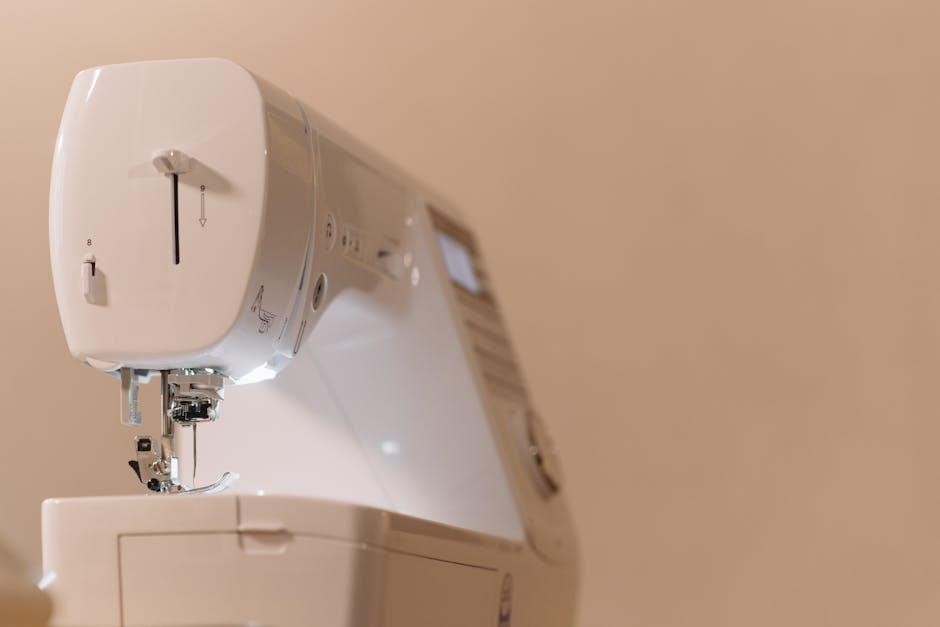
Essential Tools for Beginners
Beginners should start with basic tools like a sewing machine, fabric scissors, tape measure, pins, and hand sewing needles․ These essentials ensure a smooth start to sewing projects․
8․1 Basic Sewing Tools for Starting Out
For beginners, essential tools include fabric scissors, pins, a tape measure, hand sewing needles, and a seam ripper․ These basics ensure accuracy and ease in completing projects․ A sewing machine is also vital for efficiency․ Additional must-haves are thread, bobbins, and a needle threader․ Starting with these tools provides a solid foundation for learning and mastering sewing skills․ They help simplify the process and ensure successful outcomes for new sewers․
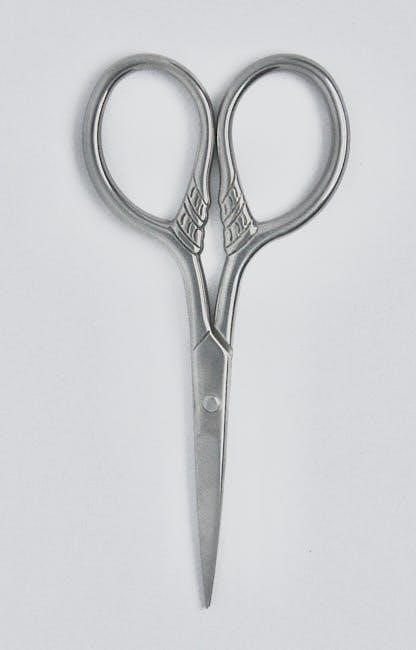
Tips for Choosing the Right Sewing Tools
Consider your skill level, project type, and budget when selecting tools․ Assess your needs to ensure tools meet your sewing goals and enhance your projects effectively․
9․1 Considerations for Selecting Sewing Tools
When choosing sewing tools, assess your needs, budget, and skill level․ Consider the type of projects you undertake and the complexity of the tasks․ Opt for tools that balance quality and affordability․ Evaluate durability and ease of use, ensuring they suit your sewing style․ For specialized tasks like quilting or garment sewing, select tools designed for those purposes․ Read reviews and try tools in person if possible to ensure they meet your expectations․
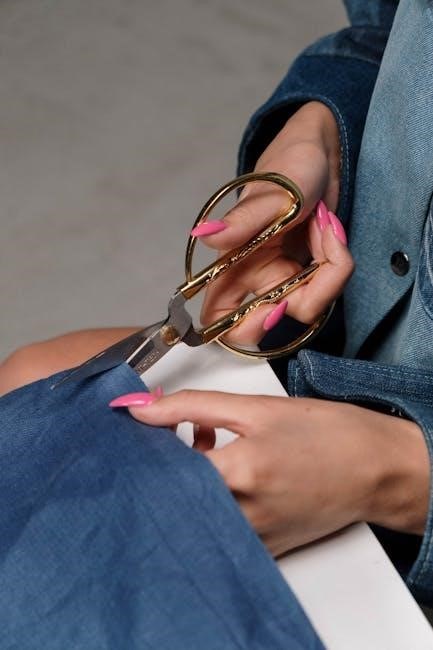
Maintenance and Care of Sewing Tools
Regularly clean and store sewing tools to maintain their quality․ Sharpen blades, lubricate machinery, and protect tools from rust․ Proper care ensures longevity and optimal performance․
10․1 How to Keep Your Sewing Tools in Good Condition
Proper maintenance ensures sewing tools remain functional and durable․ Clean tools regularly with a soft cloth, avoiding harsh chemicals․ Sharpen blades and needles to maintain precision․ Lubricate sewing machines and scissors to prevent rust and friction․ Store tools in a dry, organized space to protect them from damage․ Regular care extends the lifespan of your sewing tools, ensuring optimal performance for all projects․ Always handle tools with care to avoid breakage and maintain their quality over time․
Sewing guide tools empower creativity and efficiency, enabling sewers to bring their ideas to life․ With the right tools, every project becomes a masterpiece, from start to finish․
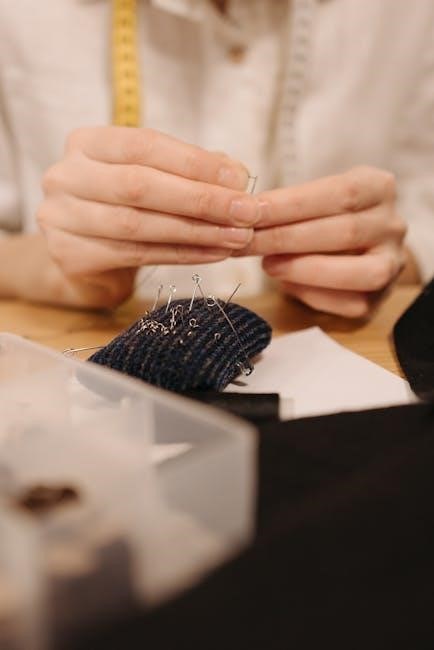
11․1 Final Thoughts on Sewing Guide Tools
Sewing guide tools are indispensable for achieving precision and creativity in sewing․ They simplify tasks, enhance efficiency, and elevate the quality of your work․ Whether you’re a beginner or an expert, investing in the right tools ensures a smoother sewing journey․ Always choose tools that suit your needs and skill level, and don’t hesitate to explore new tools as you grow in your craft․ Happy sewing!

